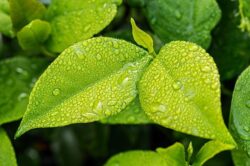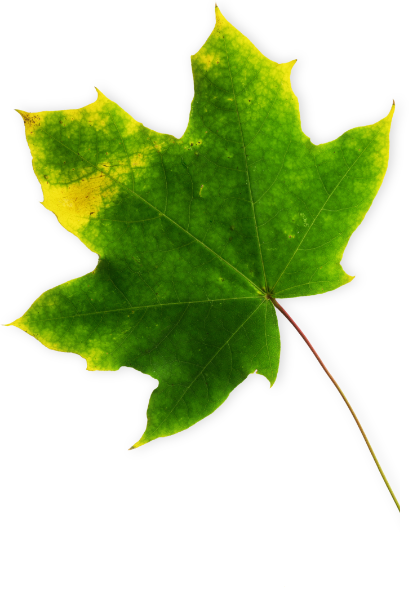Have you ever noticed how rhododendron leaves curl themselves and droop in the winter? This is a natural phenomenon to reduce transpiration. Transpiration is a process by which plants naturally lose water through their leaves in order to draw more water up from the roots. Read on to learn more on how to protect plants over the winter.
Leaves Are Vulnerable
 Leaves are covered with tiny pores called stomates that allow exchanges of carbon dioxide, oxygen, and water vapor in and out of leaves. Broadleaf evergreens have greater surface area than needled trees and there are more stomates on the undersides of leaves than on the top. This makes broadleaf evergreens more vulnerable to drying. Curling helps to reduce surface area and protects those stomates on the underside of the leaf.
Leaves are covered with tiny pores called stomates that allow exchanges of carbon dioxide, oxygen, and water vapor in and out of leaves. Broadleaf evergreens have greater surface area than needled trees and there are more stomates on the undersides of leaves than on the top. This makes broadleaf evergreens more vulnerable to drying. Curling helps to reduce surface area and protects those stomates on the underside of the leaf.
Plants can be subject to drying out at any point in the year, but supplemental water will correct this most of the year. In the winter, soil moisture can be present, but not available if frozen. Not to mention, it is harder to water during the winter. Antitranspirants are applied to leaf surfaces as a foliar spray. By coating the leaves with a thin transparent film; we can provide a water-impermeable layer to reduce transpiration. Applications will coat the plant surfaces with a clear film that will decrease the rate of transpiration. One application in the fall can last through the winter depending on weather, but it can be reapplied if day time temperatures are above freezing mid-winter.
Winter Conditions and Antitranspirants
The winter is one of the hardest times for evergreen plants in the landscape, especially broadleaf evergreens. During much of the winter months the water in the ground freezes making it unavailable to plants. When cold, drying winds blow over exposed plantings moisture is drawn from the leaves or needles and cannot be replaced.
Another way to help protect your plants over the winter is with antitranspirants . Antitranspirants can protect shrubs and trees from winter desiccation, prevent windburn, sunscald and salt air damage, reduce transplant shock, and can reduce a plants water requirement during drought conditions.
 Applications of antitranspirants prior to transplanting, helps the transplant during the critical moisture stress periods when the root system cannot compensate for the amount of water lost by transpiration. Winter burned leaves can be an entry point for fungi to take hold and cause disease.
Applications of antitranspirants prior to transplanting, helps the transplant during the critical moisture stress periods when the root system cannot compensate for the amount of water lost by transpiration. Winter burned leaves can be an entry point for fungi to take hold and cause disease.
With drought conditions, like we’ve had this year, winter burn is even more likely to happen on evergreen plants. Trees and shrubs are already under drought stress and are far more likely to incur damage. Winter burn ultimately is the plants drying out. Watering plants continues to be important, not just in the summer, but through the fall. Well hydrated plants will be able to handle those winter conditions. The best time to apply antitranspirants is in November before temperatures get too cold to apply and will last through the winter.
Snow Damage
Snow damage is a regular problem in years when we have lots of snow. In order to protect your plants over the winter, consider not planting directly under the roof edge where heavy snow will may slide off and onto your plants. Alternatively, protect vulnerable plants by not letting snow collect or in extreme cases some kind of structure to deflect snow load.
Even when we have lighter snow events, remove or knock snow off branches rather than allowing it to collect and get denser over time. Particularly in shadier spots where melting will be inherently slower. As long as snow cover in not so heavy that it is collapsing and breaking branches snow cover can actually have an insulating effect and can help shelter leaves from drying out.
For additional reading about plant healthcare, you can click to read our blog Common hemlock pests and problems. If you are interested in an antitranspirant application for your plants, call us today at
